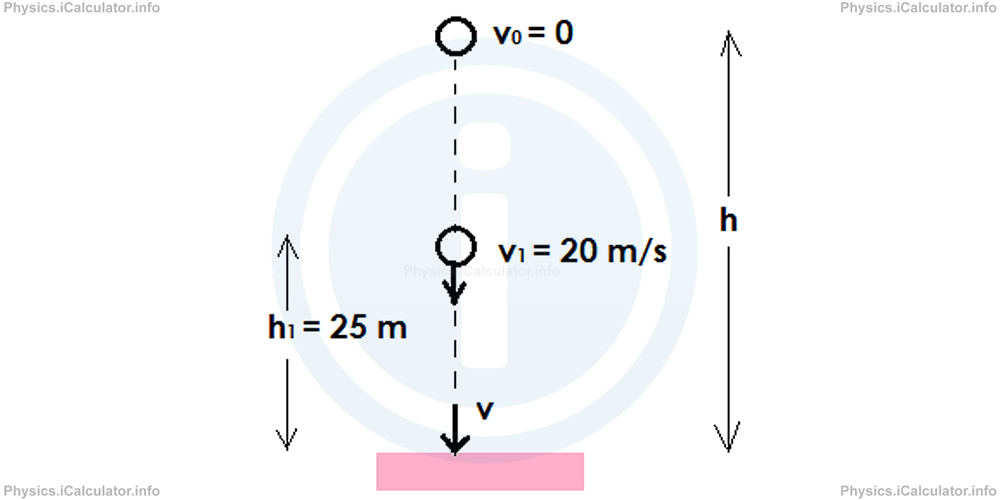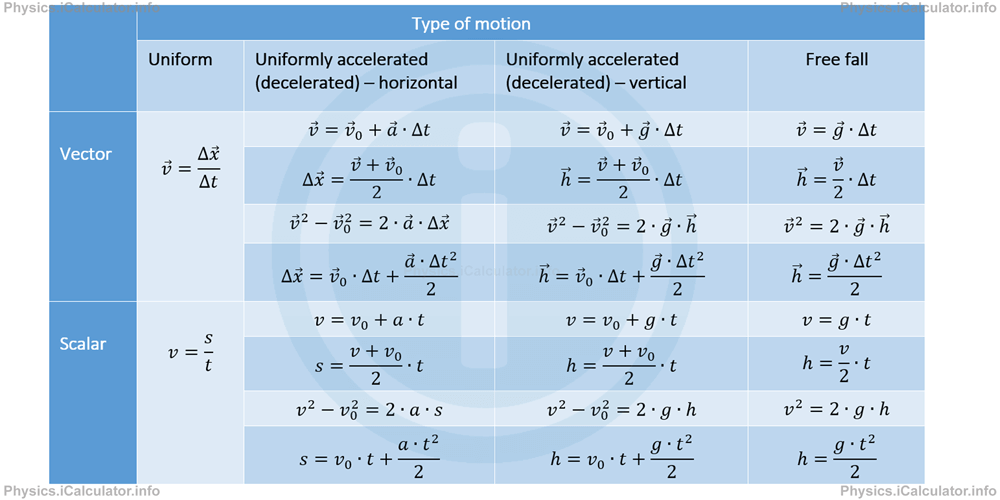Menu
Physics Lesson 3.8.4 - Free Fall as a Special Case of Vertical Motion
Please provide a rating, it takes seconds and helps us to keep this resource free for all to use
Welcome to our Physics lesson on Free Fall as a Special Case of Vertical Motion, this is the fourth lesson of our suite of physics lessons covering the topic of Equations of Motion, you can find links to the other lessons within this tutorial and access additional physics learning resources below this lesson.
Free Fall as a Special Case of Vertical Motion
If an object is released from a certain height h⃗, this process is known as "free fall." This is a kind of vertical motion but with some specifics. Thus, in free fall, the objects start falling from rest, i.e. their initial velocity is zero. Also, the gravity (gravitational acceleration g⃗) is taken as positive. In the previous example, the right side of the figure represents a free fall because the object has started falling down from rest after reaching the maximum height. Therefore, we say, "free fall is a special case of the vertical motion."
Given that in free fall we have a vertical motion with v⃗0 = 0, the four equations of the free fall become shorter than those of vertical motion. Thus, we have
Equation i
v⃗ = g⃗ × ∆tEquation ii
h⃗ = v⃗/2 × ∆tEquation iii
v⃗2 = 2 × g⃗ × h⃗Equation iv
h⃗ = g⃗ × ∆t2/2Example 3
An object released from a height h⃗ is at h⃗1 = 25 m when its velocity is v⃗1 = 20 m/s. Calculate:
- The initial height h⃗ from which the object has fallen down
- The object's velocity v⃗ just before touching the ground
- The falling time t
Solution 3
First of all, it is better to draw a figure as it will help a lot understanding the situation.

First, we have to find the height h⃗0 from the starting point to the position 25 m above the ground. Again we will take g = 10 m/s2 for convenience. Thus, using the equation
we obtain after rearranging and substituting the values
= 202/2 × 10
= 400/20
= 20m
Therefore, the total height h⃗ from which the object has been released, is
= 20m + 25m
= 45m
The final velocity v⃗ (the velocity just before touching the ground is calculated using the equation
Substituting the values, we obtain
v⃗2 = 900 m2/s2
v⃗ = √900 m2/s2
= 30 m/s
The easiest way to calculate the falling time t is by using the first formula
Thus, rearranging we obtain
= 30 m/s/10 m/s2
= 3s
The following table includes all the formulae discussed in this tutorial.

Remarks!
At first glance, it seems there are too many formulae in this Physics tutorial. However, only five of them are basic: one of the uniform motion and four of the uniformly accelerated (decelerated) motion. The other formulae represent expressions of these five basic ones in various contexts.
Acceleration was taken as negative only when slowing down. Thus, in all examples it was implied the object moves in the positive direction. In fact there is also a situation in which acceleration is takes as negative although the object is speeding up. This occurs when the object is moving towards negative. The negative sign of acceleration here exists because of the direction, not because of the deceleration. However, such situations are not included in this tutorial to avoid confusion.
You have reach the end of Physics lesson 3.8.4 Free Fall as a Special Case of Vertical Motion. There are 4 lessons in this physics tutorial covering Equations of Motion, you can access all the lessons from this tutorial below.
More Equations of Motion Lessons and Learning Resources
Whats next?
Enjoy the "Free Fall as a Special Case of Vertical Motion" physics lesson? People who liked the "Equations of Motion lesson found the following resources useful:
- Free Fall Feedback. Helps other - Leave a rating for this free fall (see below)
- Kinematics Physics tutorial: Equations of Motion. Read the Equations of Motion physics tutorial and build your physics knowledge of Kinematics
- Kinematics Revision Notes: Equations of Motion. Print the notes so you can revise the key points covered in the physics tutorial for Equations of Motion
- Kinematics Practice Questions: Equations of Motion. Test and improve your knowledge of Equations of Motion with example questins and answers
- Check your calculations for Kinematics questions with our excellent Kinematics calculators which contain full equations and calculations clearly displayed line by line. See the Kinematics Calculators by iCalculator™ below.
- Continuing learning kinematics - read our next physics tutorial: Position v's Time and Distance v's Time Graph
Help others Learning Physics just like you
Please provide a rating, it takes seconds and helps us to keep this resource free for all to use
We hope you found this Physics lesson "Equations of Motion" useful. If you did it would be great if you could spare the time to rate this physics lesson (simply click on the number of stars that match your assessment of this physics learning aide) and/or share on social media, this helps us identify popular tutorials and calculators and expand our free learning resources to support our users around the world have free access to expand their knowledge of physics and other disciplines.